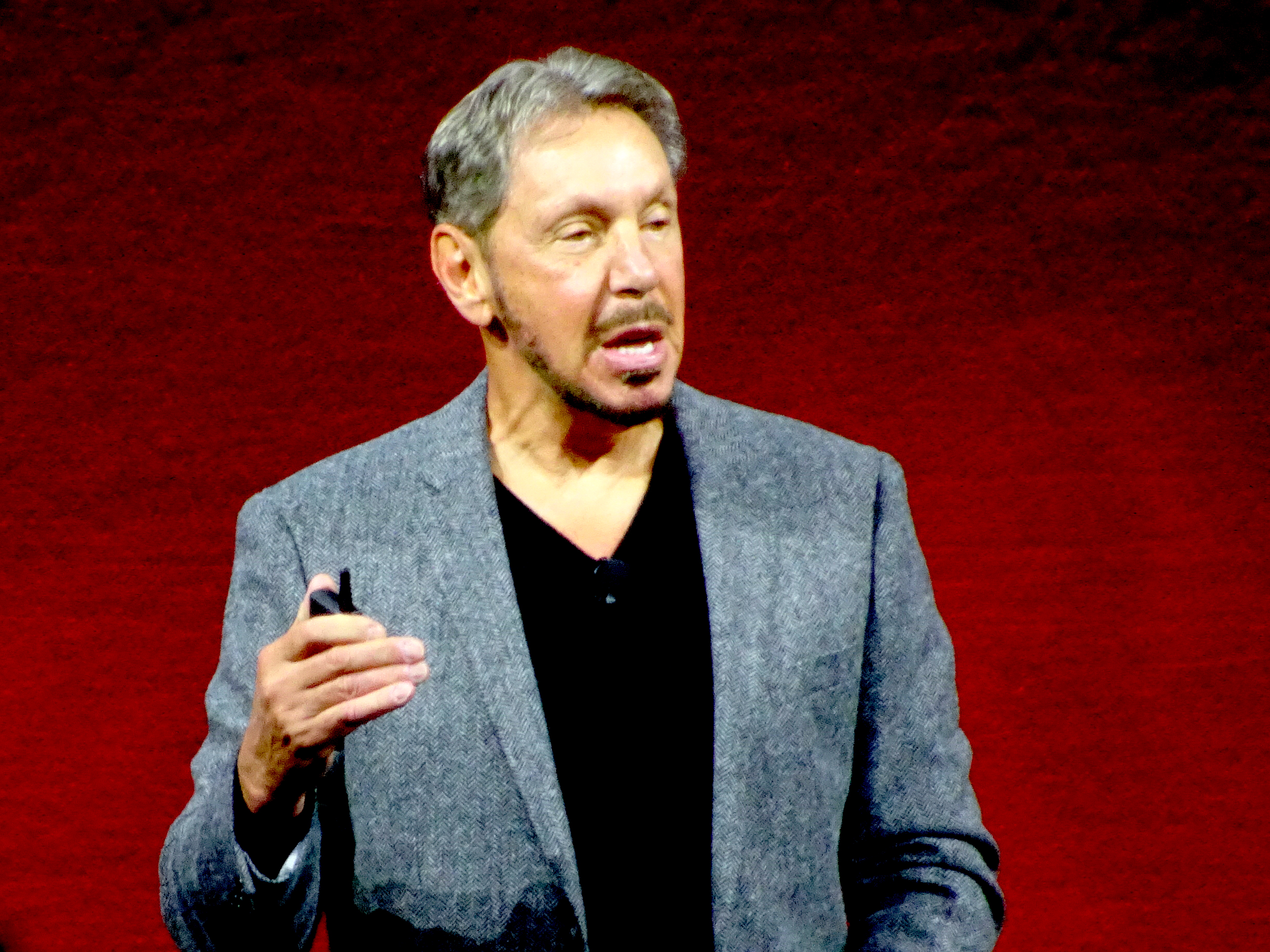 CLOUD
CLOUD
 CLOUD
CLOUD
 CLOUD
CLOUD
Oracle Corp.’s OpenWorld, now in its 21st year, is as big, brash and buzzy as ever. This year’s conference hosted more than 60,000 Oracle customers and partners from 175 countries. Not only that, the livestream of the keynote sessions was viewed by 19 million virtual attendees.
It’s not OpenWorld without Oracle co-founder, Executive Chairman and Chief Technology Officer Larry Ellison leading the charge. With Ellison, whom Forbes magazine lists as the 10th wealthiest person in the world, still calling the shots, no one can deny that Oracle remains a fighter. Oracle rarely competes in any segment without a top-down commitment to win the predominant market share, nail down all the banner enterprise accounts and vanquish all rivals.
At this year’s OpenWorld at the Moscone Center in San Francisco, Ellison left no doubt that Oracle is not sitting still in the public cloud arena. On Monday, Ellison’s day one keynote showed him in classic form. He presented an in-depth discussion of the sophisticated cloud-optimized engineering of the latest version of the company’s market-leading database, Oracle Autonomous Database, while slamming equivalent solutions from a chief rival — in this case, the public-cloud database-as-a-service offerings from Amazon Web Services Inc.
Ellison would have savaged AWS under any circumstances. However, he delivered his OpenWorld 2018 keynote with a special vehemence that no doubt derived from the fact that Oracle is not the top dog in the public cloud arena.
In fact, Oracle is not even in the top three by market share. According to the RightScale 2018 State of the Cloud Report, only 5 percent of enterprises have adopted Oracle Cloud, compared with 68 percent for AWS, 58 percent for Microsoft Azure and 19 percent for Google Cloud Platform. Compounding Ellison’s woes, Oracle continues to show disappointing growth in public cloud revenues and has struggled to build its seven-year-old public cloud offering through a combination of strategic acquisitions and organic development.
So Ellison had nothing to lose by going on the offensive vis-à-vis AWS, as he has in previous years, though it’s clear that they are far from the only formidable rival that it faces in the market. With respect to AWS’ cloud databases, Ellison made the following competitive claims:
All of those claims are highly debatable, and no doubt AWS is already sharpening its point-for-point rebuttals. But it’s not at all clear that high-profile tech billionaire pugilism will move the public-cloud needle in Oracle’s favor.
In fact, it would appear now that the window of opportunity has passed for Oracle to bootstrap itself into the top tier of public cloud providers through strategic acquisitions. This tactic, which Oracle has leveraged many times in the enterprise application market vis-à-vis archrival SAP SE — such as acquiring NetSuite Inc., PeopleSoft Inc. and Siebel CRM Systems Inc. — promises diminishing returns in the public cloud arena.
Even in the unlikely event that Oracle could acquire competitive offerings from Google LLC, IBM Corp., VMware Inc. and Alibaba Group Holdings Ltd., it would still not be anywhere near shouting range of AWS’ leading market share. And gobbling up disparate public cloud rivals probably wouldn’t dent Microsoft Azure’s impressive second-place momentum, which is fueled in great part by a continued streak of innovative R&D, global deployment, sharp marketing and aggressive pricing.
Much of what Oracle announced in enhancements to its cloud platform portfolio was simply table stakes necessary to stay in the competitive fray. Chief enterprise cloud enhancements expanded Oracle’s global footprint, deepened its security features and evolved the artificial intelligence-driven platform management functionality that was already present in the portfolio.
Going forward, Oracle’s strongest bet in the public cloud arena will be to grow its already impressive enterprise software-as-a-service application portfolio, though even there it remains behind the market-share leaders SAP and Salesforce in enterprise resource planning and customer relationship management, respectively.
It was clear from the other key executive keynoter — Oracle Chief Executive Mark Hurd — that technical innovation is the foundation of Oracle’s future-proofing strategy in the SaaS application market. In Hurd’s day two keynote, he made several predictions that support the pillars that are driving many of its announcements at OpenWorld. Hurd predicted that by 2025:
With those trends in mind, Oracle’s announcements this week provide a clear foundation for deepening its cloud application differentiators. Wikibon is impressed with the breadth and sophistication of the new enterprise digital assistant capabilities embedded in Oracle Cloud’s enterprise resource planning, human resources, customer relationship management and customer experience applications, supporting AI-driven predictive, prescriptive, personalized and contextual decision guidance, what Oracle refers to as “intelligent process automation.” Likewise, Oracle announced several new enterprise-ready blockchain applications for supply chain management.
In the enterprise cloud SaaS application market, Oracle is far and away more advanced than its rivals in embedding AI-driven contextual guidance in its solutions. In the coming year, Wikibon recommends that Oracle deepen and extend that functionality in several ways:
Enhancements such as these will be necessary for Oracle to address the full range of enterprise requirements for digital transformation. Doing so well would help the company pull away from the pack in the one segment — beyond enterprise relational databases — where it remains in the top tier in market share: enterprise-grade SaaS solutions.
THANK YOU